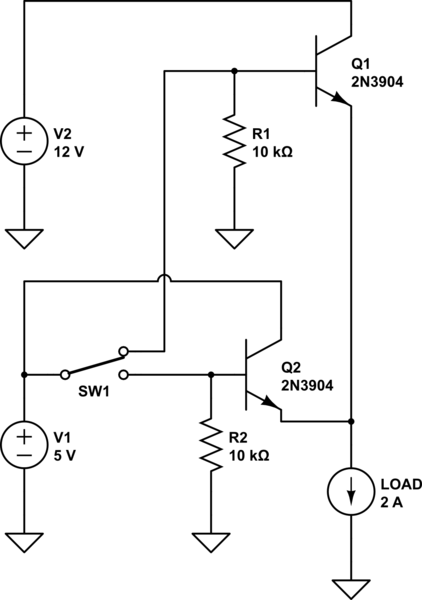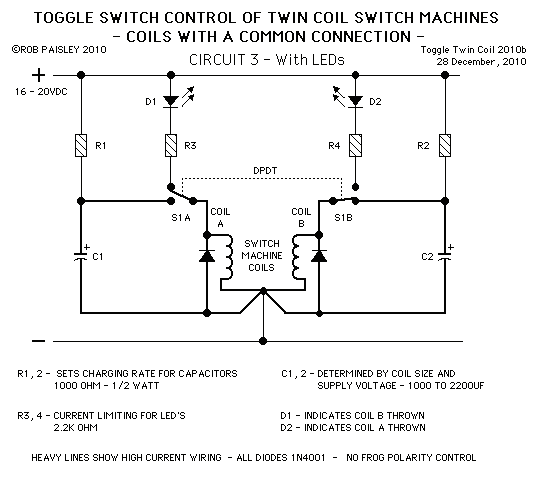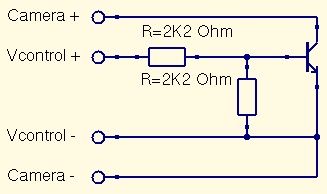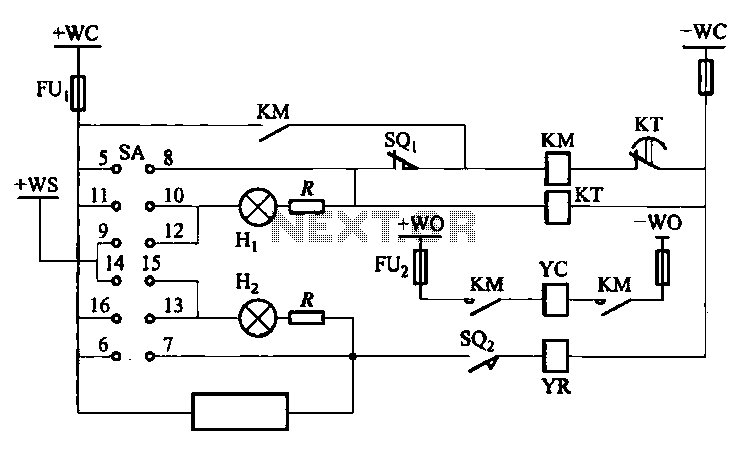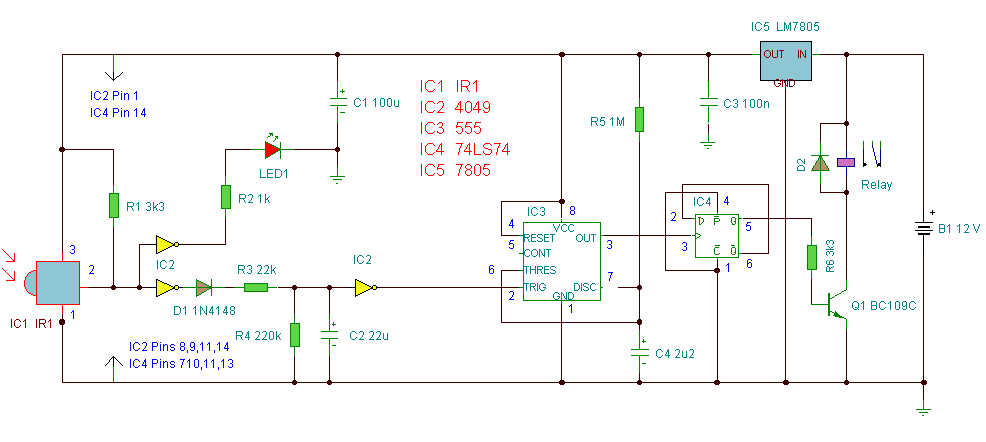
Toggle Switch with 4013
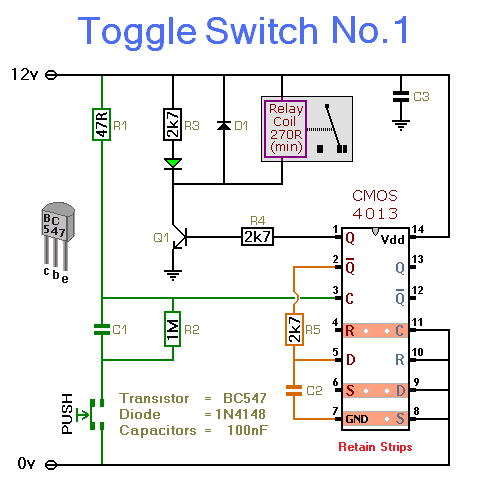
This simple circuit will energize and de-energize a relay at the push of a button. Any type of momentary action push-to-make switch can be used. Pushing the button once will energize the relay. And pushing it a second time will de-energize the relay. Only one half of the Cmos 4013 is used. So you could construct two independent toggle switches with a single IC. The circuit will work at anything from 5 to 15 volts. All you need to do is select a relay with a coil voltage that suits your supply.
The circuit utilizes a CMOS 4013 dual D-type flip-flop integrated circuit, specifically employing one half of the IC to achieve a toggle switch functionality. When a momentary push-to-make switch is pressed, it sends a brief high signal to the clock input of the flip-flop, causing it to toggle its output state. The output of the flip-flop is connected to the relay's coil, which controls the relay's operation.
The relay serves as an electromechanical switch, allowing for the control of higher power devices while being operated by the low power signal from the CMOS IC. The circuit can be powered by a voltage supply ranging from 5 to 15 volts, making it versatile for various applications. The choice of relay should be based on the coil voltage compatible with the selected supply voltage.
In addition to the relay, an LED can be integrated into the circuit for visual feedback, indicating the current state of the relay (energized or de-energized). The LED can be connected in parallel with the relay coil or in series with a current-limiting resistor to ensure proper operation without exceeding the LED's forward voltage rating.
The circuit design is straightforward and allows for the construction of two independent toggle switches by utilizing both halves of the CMOS 4013 chip, thereby providing an efficient solution for applications requiring multiple relay controls. Proper attention should be given to the relay's specifications, including its contact ratings and coil resistance, to ensure reliable operation within the intended application.This simple circuit will energize and de-energize a relay at the push of a button. Any type of momentary action push-to-make switch can be used. Pushing the button once - will energize the relay. And pushing it a second time - will de-energize the relay Only one half of the Cmos 4013 is used. So you could construct two independent toggle switches with a single IC. The circuit will work at anything from 5 to 15-volts. All you need do is select a relay with a coil voltage that suits your supply. The LED 🔗 External reference
The circuit utilizes a CMOS 4013 dual D-type flip-flop integrated circuit, specifically employing one half of the IC to achieve a toggle switch functionality. When a momentary push-to-make switch is pressed, it sends a brief high signal to the clock input of the flip-flop, causing it to toggle its output state. The output of the flip-flop is connected to the relay's coil, which controls the relay's operation.
The relay serves as an electromechanical switch, allowing for the control of higher power devices while being operated by the low power signal from the CMOS IC. The circuit can be powered by a voltage supply ranging from 5 to 15 volts, making it versatile for various applications. The choice of relay should be based on the coil voltage compatible with the selected supply voltage.
In addition to the relay, an LED can be integrated into the circuit for visual feedback, indicating the current state of the relay (energized or de-energized). The LED can be connected in parallel with the relay coil or in series with a current-limiting resistor to ensure proper operation without exceeding the LED's forward voltage rating.
The circuit design is straightforward and allows for the construction of two independent toggle switches by utilizing both halves of the CMOS 4013 chip, thereby providing an efficient solution for applications requiring multiple relay controls. Proper attention should be given to the relay's specifications, including its contact ratings and coil resistance, to ensure reliable operation within the intended application.This simple circuit will energize and de-energize a relay at the push of a button. Any type of momentary action push-to-make switch can be used. Pushing the button once - will energize the relay. And pushing it a second time - will de-energize the relay Only one half of the Cmos 4013 is used. So you could construct two independent toggle switches with a single IC. The circuit will work at anything from 5 to 15-volts. All you need do is select a relay with a coil voltage that suits your supply. The LED 🔗 External reference
